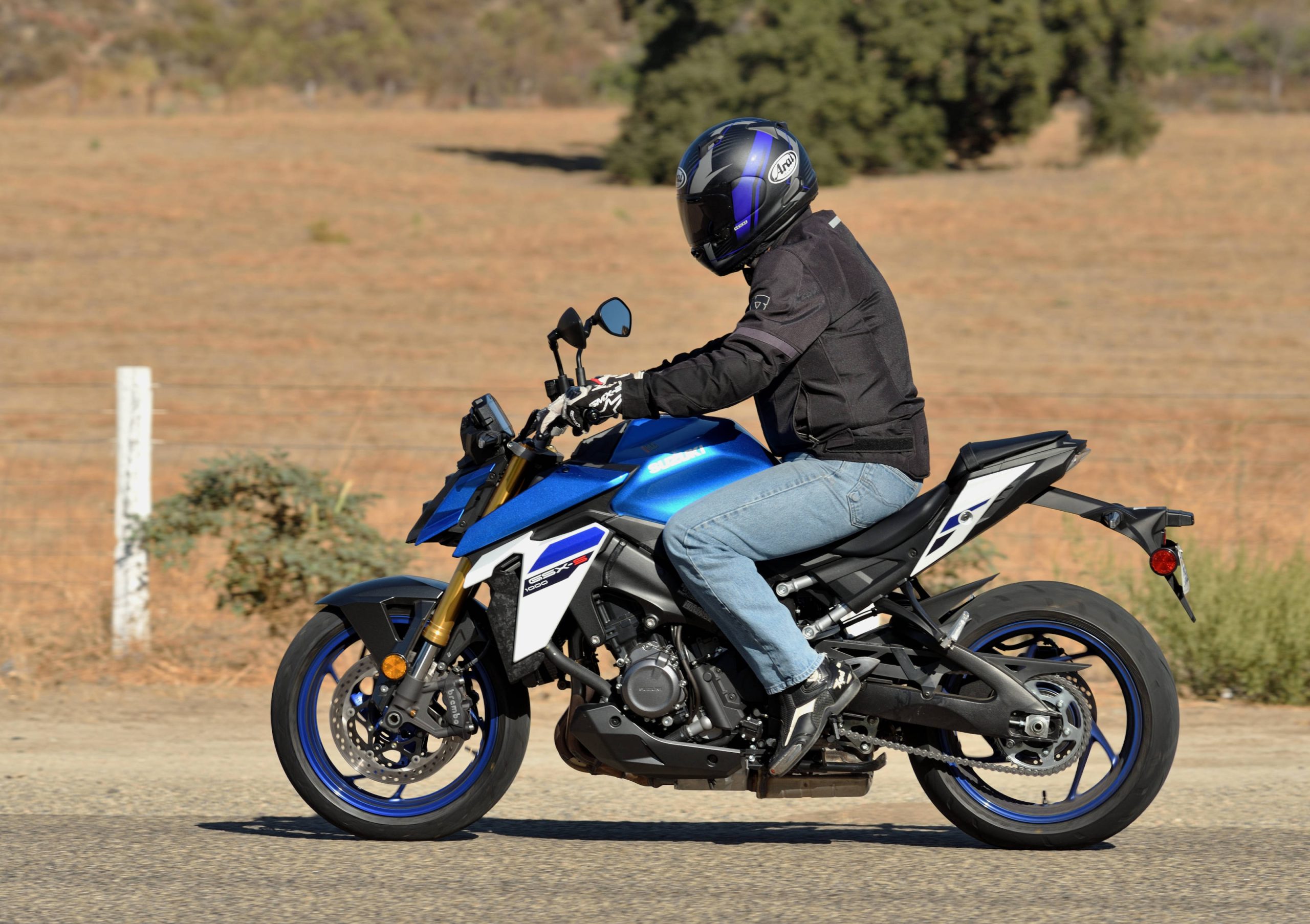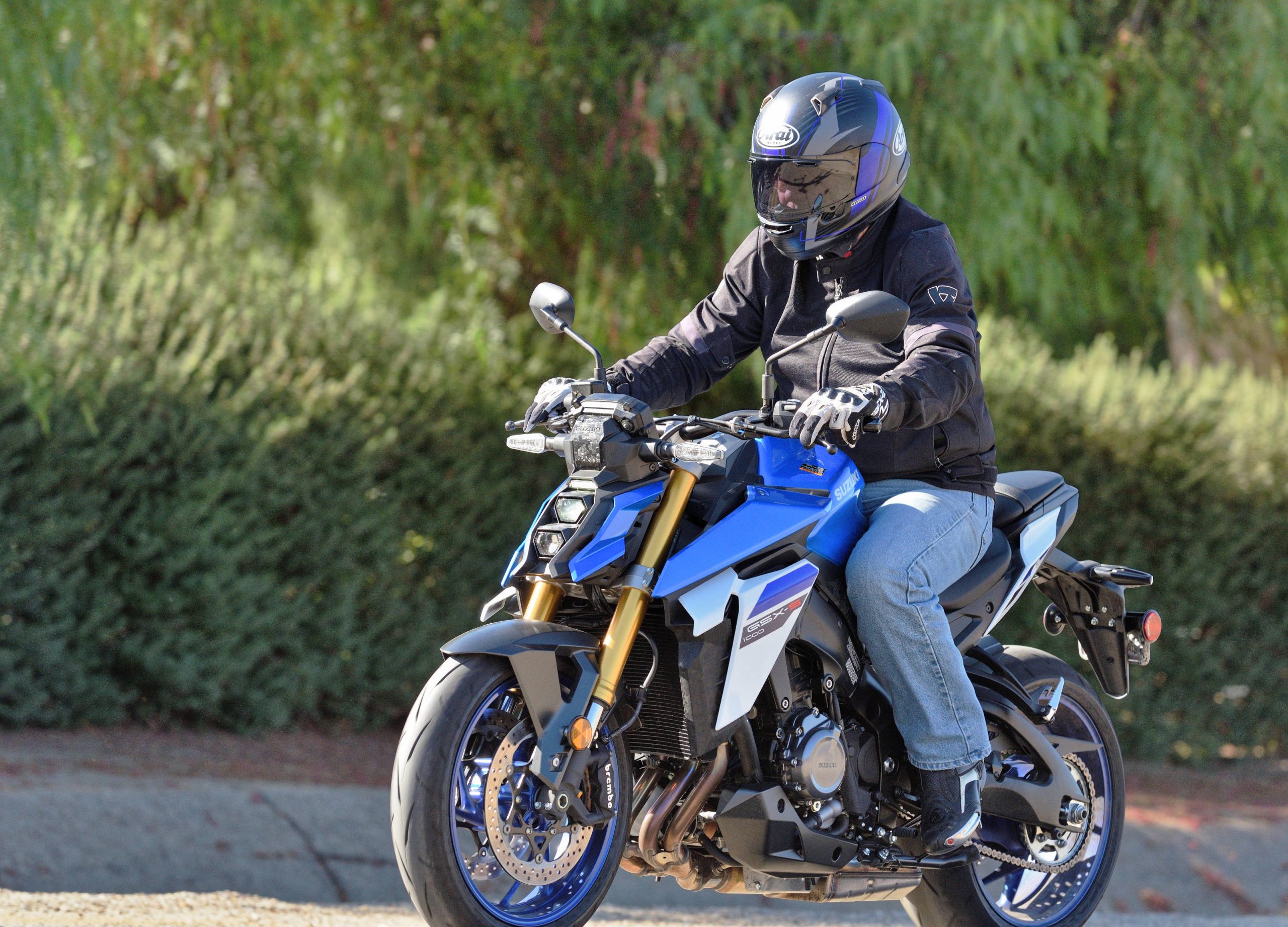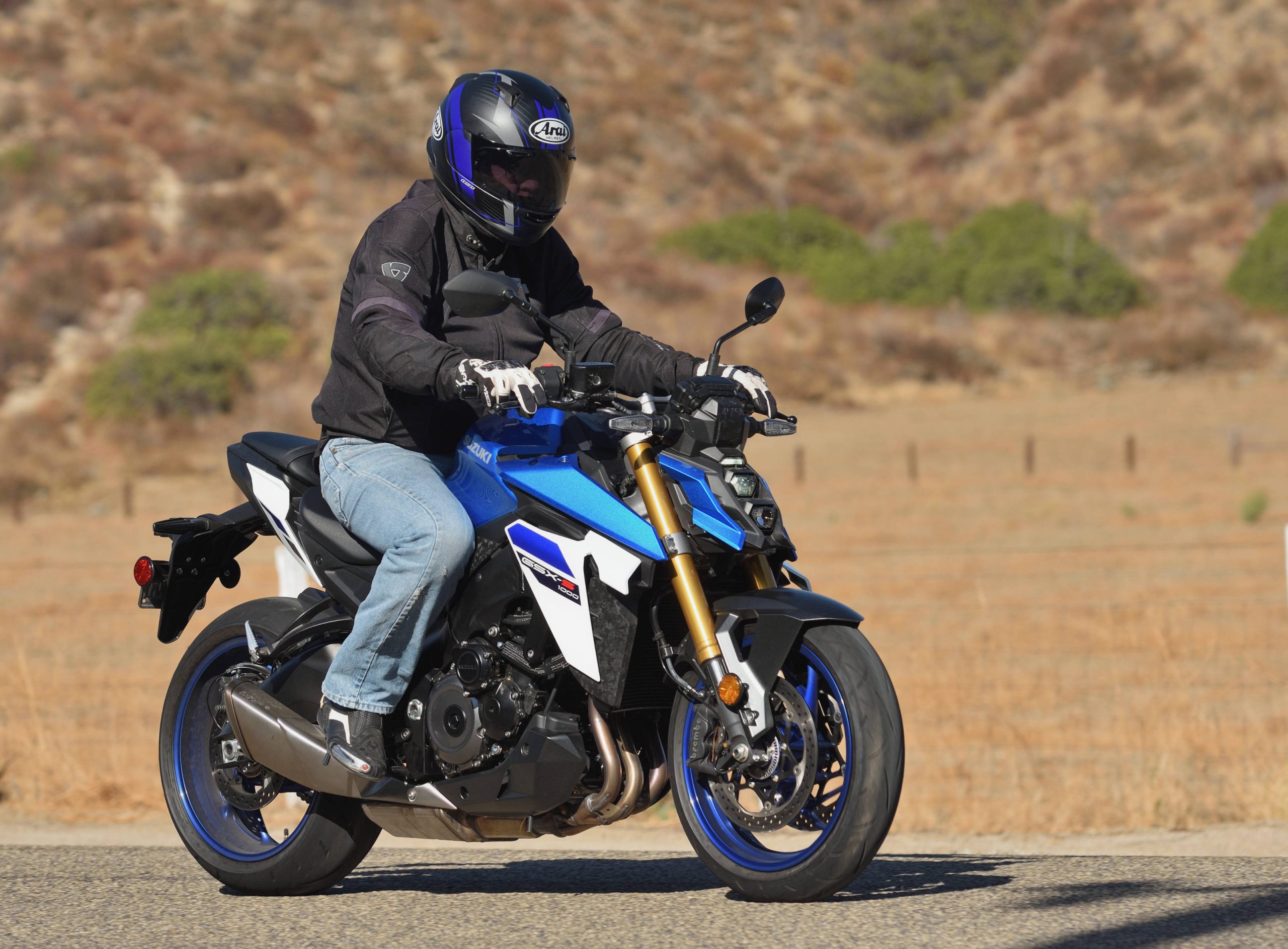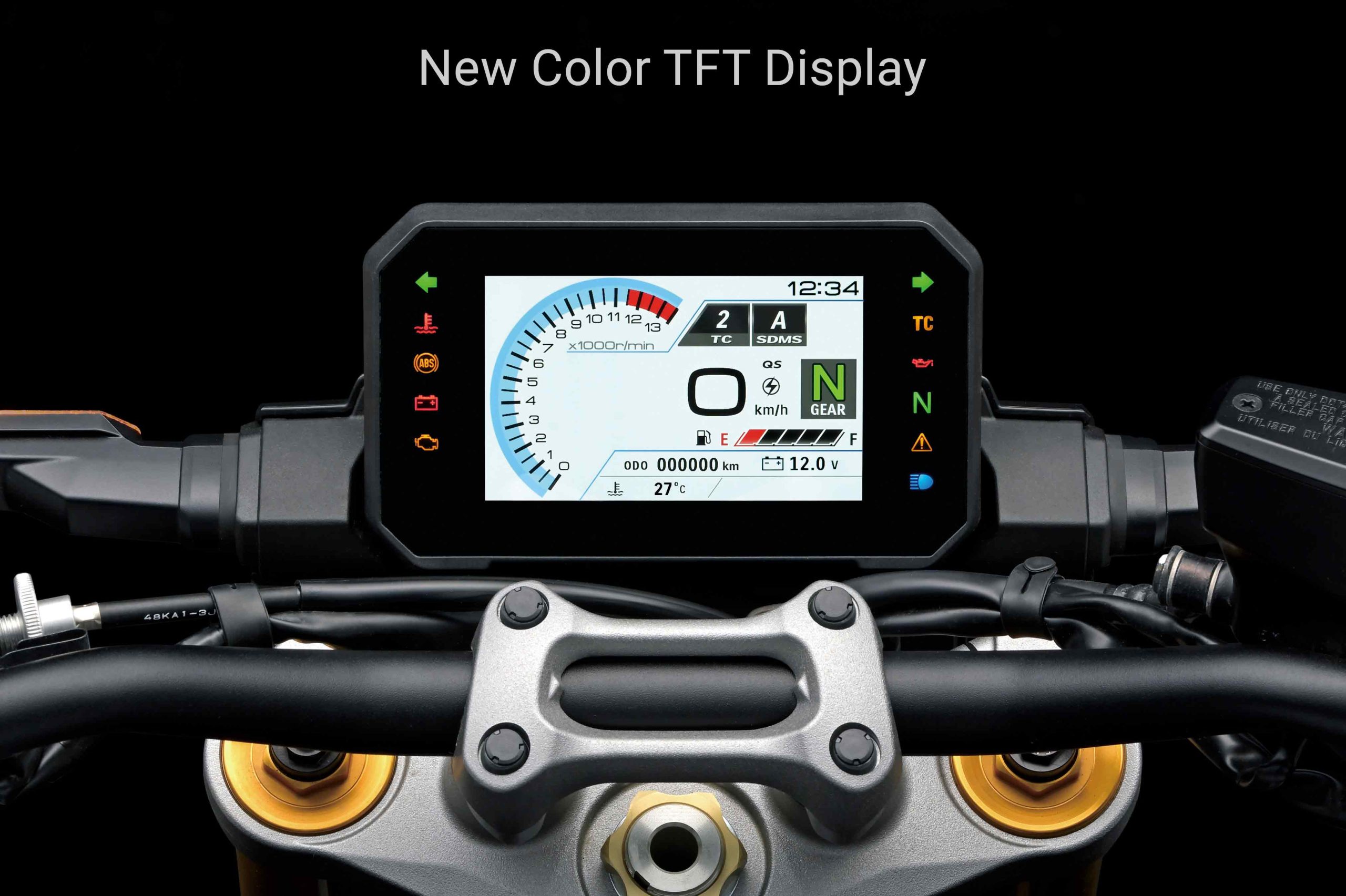
The naked bike category has exploded in popularity in the past 10 years. Now, manufacturers readily equip these bikes with their latest high performance engines and technology.
Suzuki’s GSX–S1000 is a bit of an outlier in the large displacement naked category. By this, I mean, it is an open class displacement motorcycle that doesn’t make 200+ horsepower and feature the latest, and greatest computer-controlled rider assists.
This could be considered a weakness, but in many ways, it translates into a great strength for this bike. As an open classer with an engine derived from a superbike, it still makes plenty of horsepower (more than enough for any street rider), and the price is kept in a very attractive range. In other words, this is a bike that potentially satisfies any horsepower junkie looking for a naked bike with quality components that doesn’t break the bank.
It was 2022 when the GSX–S1000 received its last major updates. This corresponded with a need to bring the engine into compliance with Euro5 emission standards. At the same time, Suzuki made significant changes to the bike.
The bike was redesigned aesthetically at that time, and received LED lights. It also received a standard quick-shifter (both directions), three new ride modes, five–level traction control, and improved ABS.

What hasn’t changed is the foundation of the engine, which is still based on the 999 cc in-line four-cylinder developed from the original K5 unit found in an earlier Suzuki superbike. This engine has received plenty of changes over the years, including, but not limited to cams, airbox design, throttle bodies, valve springs, and a new exhaust system.
The suspension consists of manually adjustable units, including a fully adjustable front fork and a rear shock adjustable for spring preload and rebounding. Damping is reasonable, but relatively firm. Brakes include 310 mm front disc squeezed by a pair of four dash piston, radiator mounted Rambo calipers And the aforementioned ABS control the rear brake, of course, is a simpler, smaller unit.
This bike also has the ubiquitous low RPM assist function, which helps prevent stalling when leaving a stop, but can still seem like a welcome addition to experience riders friend more about that later.
This engine, based on the older superbike design, is plenty healthy for just about any ride or. Suzuki claims 150 hp at the crank, but we have seen Dino results putting rear wheel power in the neighborhood of 135 hp, which would indicate a crank output near 160. Torque is also very healthy with over 78 pound feet at peak, and more than 60 pound feet beginning at below 4,000 RPM and carried all the way to 11,000 RPM. You can’t find much better flickability, or more broad, linear, power delivery, than you find from this engine.
This is a comfortable motorcycle to sit on. Like most naked, the economics are pretty much bolt upright with reasonable legroom. Pulling away from a stop, the bike feeds power in smoothly, but generously.

If you haven’t been on a big displacement, bike recently, The power can surprise you, at first. Indeed, with the way Suzuki designed the torque curve, this bike is faster than some of those 200+ horsepower models at real world RPM levels. Power bills in a very predictable, linear fashion to a strong rush at high RPM.
All that power is brought under control with those big front discs and the Brembo calipers. No, these are not the latest and greatest Brembo units, but they offer good power and feel, and easily decelerate quick enough to satisfy a rider aboard a fast open class or like this one.
The suspension is a little bit on the stiff side, but I wouldn’t call it harsh. The payoff is when you push the bike on a twisty canyon road. Here, the suspension balances, the bike beautifully, and provides plenty of confidence to push. The stock Dunlop Road port two tires are adequate, but this bike frankly deserves something better for the experience writer. Bridgestone‘s S23 tires come to mind.
The quick shifter on the bike is fantastic. Shifting both up and down is without drama, and noticeably smoother than on most other bikes with this feature. Suzuki did a fantastic job here.
The only complaint we have with the transmission is the tight gear ratios. Perhaps a carryover from the super bike days, first gear is quite tall, and the steps between gears are very short. With the immensely, broad torque curve, this bike deserve the transmission with much broader gearing.

Selecting a from the three available engine modes, results in quicker, meatier power delivery (although B mode also offers full power, but a softer throttle response). Nevertheless, this mode offers, smooth, throttle transitions, include, including opening the throttle on corner exits.
As a naked bike, wind protection is missing (of course), but we could still see plenty of riders using this bike as a commuter, perhaps with a small windscreen attached. The relatively big 5 gallon fuel tank helps here, along with the comfortable ergonomics.
So this bike won’t offer you 200+ horsepower that you can use to scare yourself every few weeks when you find an open, empty road. But you won’t be paying well over $20,000 for it like you might for a Ducati or an MV Agusta.
For 2025, the base U.S. MSRP for the GSX-S1000 is $11,909. For that, you get a very fast motorcycle with modern looks and more than adequate suspension and brakes that is still fast enough to occasionally scare you. We not only think that is a pretty good deal, but it’s hard to beat.
We should not hear that we tested a 2024 model, which turns out to be identical to the current 2025 model with one exception. The dated Instrument panel has been replaced with a bright, highly legible 5 inch color TFT screen. So you can read this review knowing that it describes the performance of the 2025 model with that single exception. This new color screen is exactly what the 2024 model needed, and now has.
Take a look at Suzuki’s website for additional details and specifications.

You can skip to the end and leave a response. Pinging is currently not allowed.











